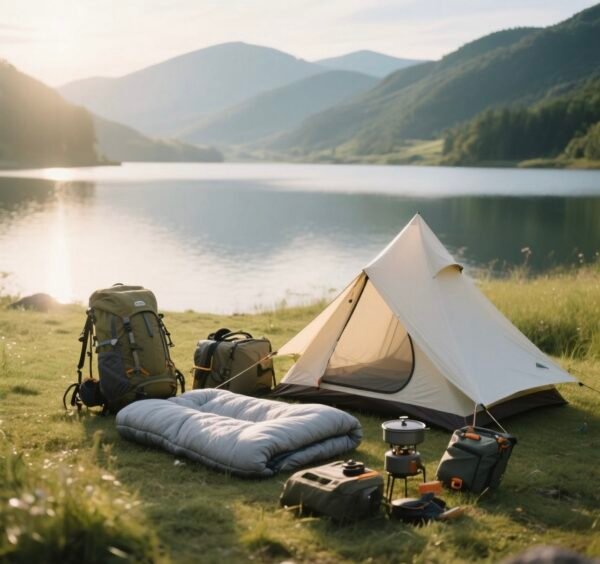Introduction
Outdoor enthusiasts seek immersion in nature – from misty mountain dawns to remote coastal sunsets. Yet with these adventures comes exposure to microbial risks embedded in the environment. Camping gear, designed to support multi-day living outdoors, becomes a frontline defense against:
- Pathogenic bacteria
- Molds and fungi thriving in humid or damp conditions
- Unpleasant odors caused by microbial degradation
As consumer awareness of hygiene increases, integrating inorganic antimicrobial agents into camping products offers both practical and psychological reassurance for healthier adventures.
Key Microbial Risks in Camping Environments
- High Moisture Exposure
Dew, rain, and humidity create ideal conditions for bacterial and fungal growth on tents, sleeping bags, and mats. - Frequent Contact Without Cleaning
Gear is handled repeatedly during trips without immediate cleaning, accumulating microbes from soil, water, and human contact. - Storage Conditions Post-Use
Residual moisture in improperly dried gear fosters microbial colonization, leading to odors, discoloration, and material degradation.
Why Incorporate Antimicrobial Agents in Camping Equipment?
✅ Extended Product Lifespan
Prevents microbial degradation that weakens fabric fibers, coatings, and plastic components.
✅ Improved User Hygiene and Safety
Reduces potential exposure to harmful bacteria, especially for skin-contact items like sleeping mats and backpacks.
✅ Odor Control
Inhibits bacteria responsible for musty or sour smells developing aft
✅ Brand Differentiation
Appeals to health-conscious consumers prioritizing cleanliness alongside durability and performance.
Effective Antimicrobial Agents for Camping Gear
Silver-Based Agents
- Mode: Disrupt bacterial cell membranes and inhibit DNA replication, ensuring rapid cell death.
- Applications: Sleeping bag linings, moisture-wicking inner f
- Advantages: High efficacy at low concentrations, durable through multiple wash cycles.
Copper-Based Agents
- Mode: Generates reactive oxygen species that damage microbial proteins and DNA.
- Applications: Tent fabrics, ground mats, backpack ba
- Advantages: Strong antifungal properties, ideal for preventing mold in damp conditions.
Zinc-Based Agents
- Mode: Inhibits microbial enzymatic pathways to limit growth and replication.
- Applications: Foam sleeping mats, EVA foam
- Advantages: Mild antimicrobial action, cost-effective for large-volume components.
Integration in Gear Manufacturing
- Polymer Compounding
Silver, copper, or zinc agents are compounded into masterbatches compatible with polyester, nylon, EVA, or PE used in - Fabric Finishing
Antimicrobial agents can be added as durable water-based finishes for textiles, preserving breathability while imparting microbial - Molded Component Processing
For plastic parts (buckles, handles, water bottle caps), agents are embedded during injection molding for integrated protection.
Performance Testing
Camping products with antimicrobial integration are evaluated for:
- Bacterial reduction efficacy (ISO 22196)
- Fungal resistance (ASTM G21)
- Durability under UV exposure and mechanical abrasion, simulating outdoor conditions
Case Example: Silver-Infused Sleeping Bags
Field testing in humid Southeast Asian environments demonstrated:
- 99% reduction in Staphylococcus aureus and Escherichia coli on inner sleeping bag linings after 24 hours.
- Noticeable reduction in odor build-up over 5 consecutive nights without washing.
- No compromise in fabric breathability or moisture-wicking performance.
Limitations and Solutions
💰 Cost Impact
Integrating antimicrobial agents raises production costs by 8–15%, depending on agent type and concentration. However, market surveys indicate consumers are willing to pay premiums for hygiene-enhanced gear, especially post-pandemic.
🛠 Fabric Performance Compatibility
High antimicrobial concentrations may impact textile softness or flexibility. Optimized formulations balance protection with tactile comfort.
📜 Environmental and Regulatory Compliance
Ensure additives comply with REACH, EPA, and regional consumer product safety standards for prolonged skin contact and environmental release during washing.
Consumer Perspective
Modern outdoor enthusiasts value gear that combines performance with health protection. Whether for solo backpacking, family camping, or expedition use, antimicrobial-integrated equipment addresses hidden pain points often overlooked:
“Knowing my sleeping bag stays fresh and clean gives me peace of mind, especially on extended treks where washing isn’t an option.”
Future Innovations
- Nanotechnology-enhanced agents for greater efficacy with minimal material impact.
- Biodegradable antimicrobial coatings aligning with sustainable gear production.
- Smart antimicrobial surfaces activating under moisture exposure for targeted protection.
Conclusion
Antimicrobial integration into camping gear represents a convergence of material science and outdoor lifestyle innovation, addressing both hygiene and durability needs. Brands adopting these solutions position themselves as leaders in promoting healthier, safer, and more enjoyable nature experiences.
✉️ Partner With Us
We offer tailored silver, copper, and zinc-based antimicrobial formulations optimized for outdoor gear manufacturing. Contact our team to enhance your product lines with next-generation hygiene protection.


-300x210.jpg)
